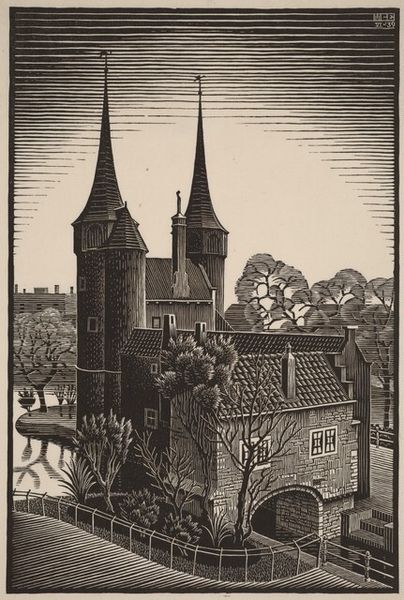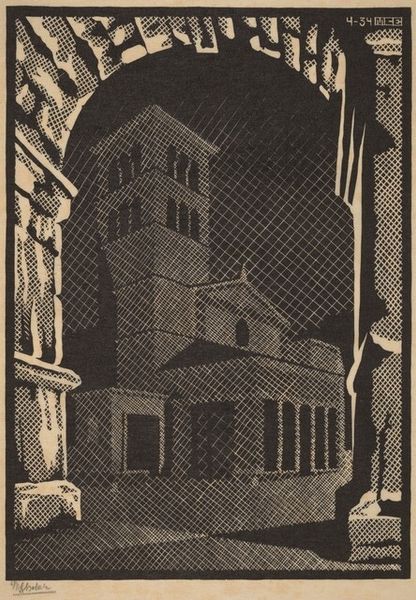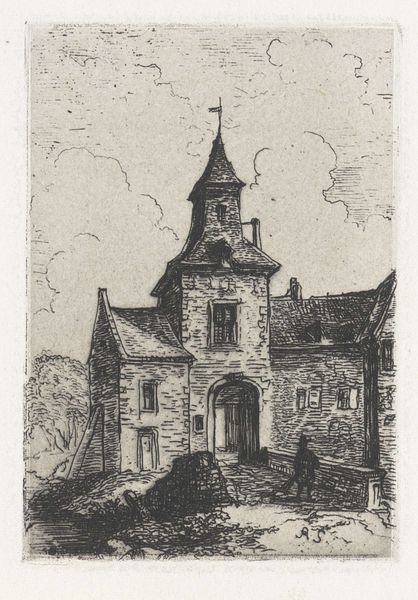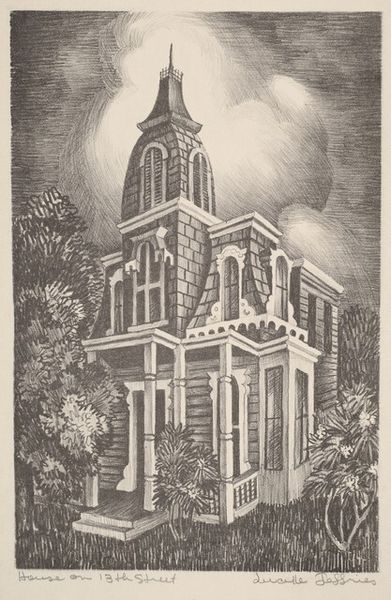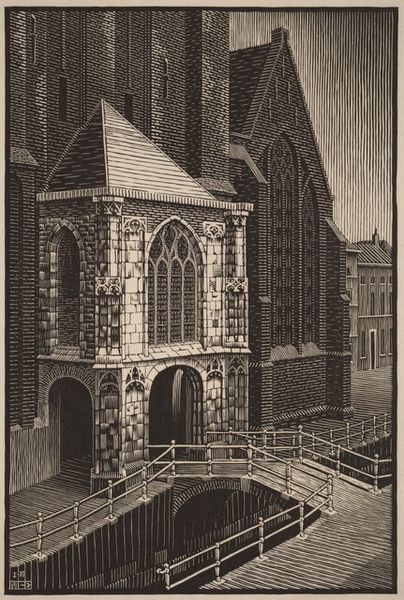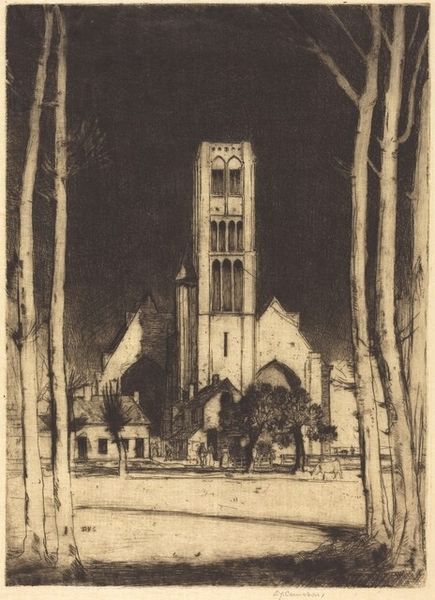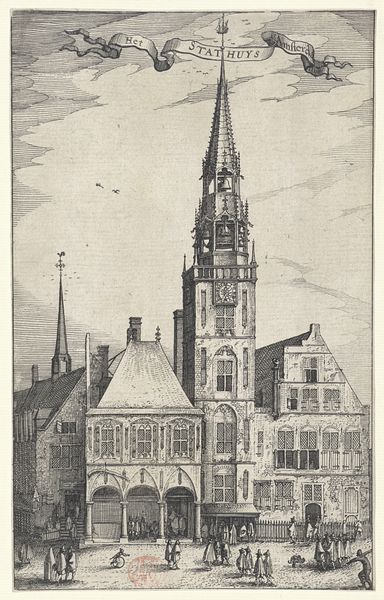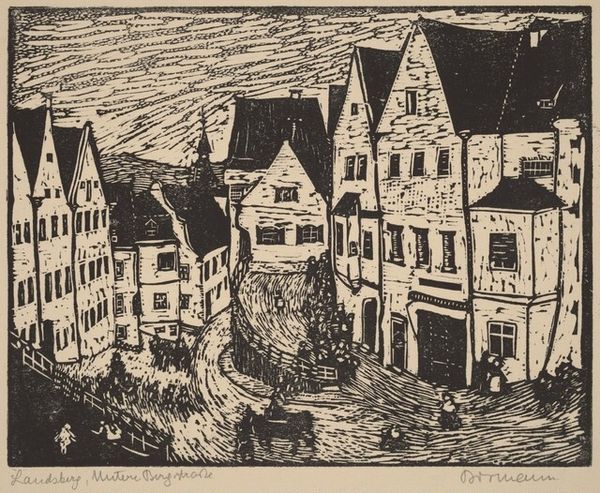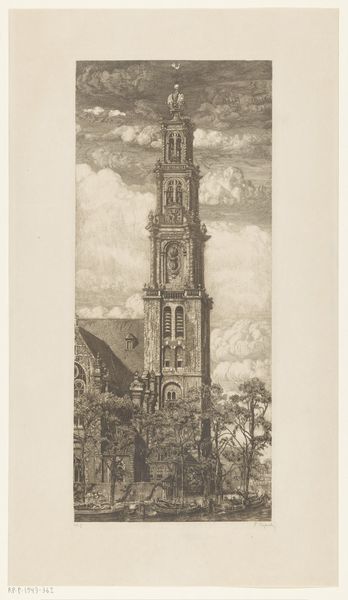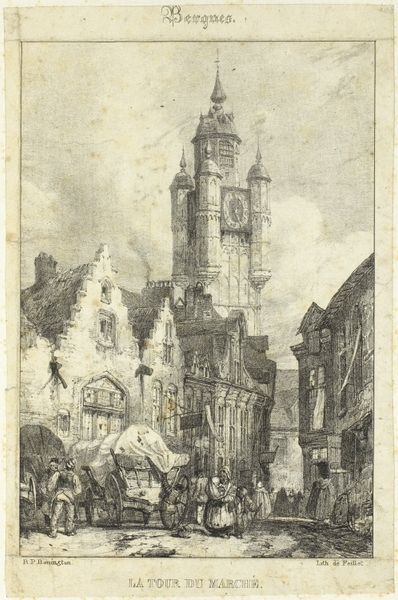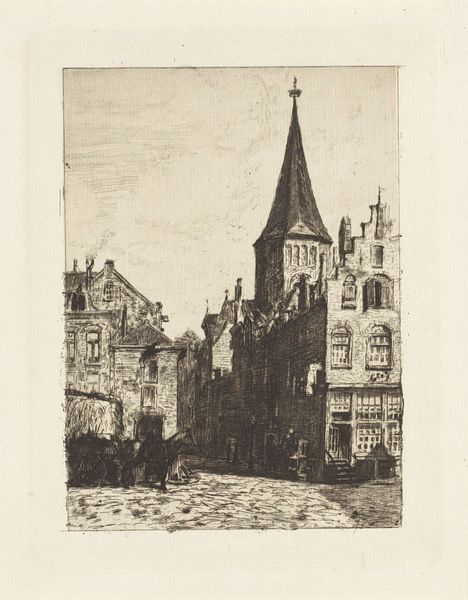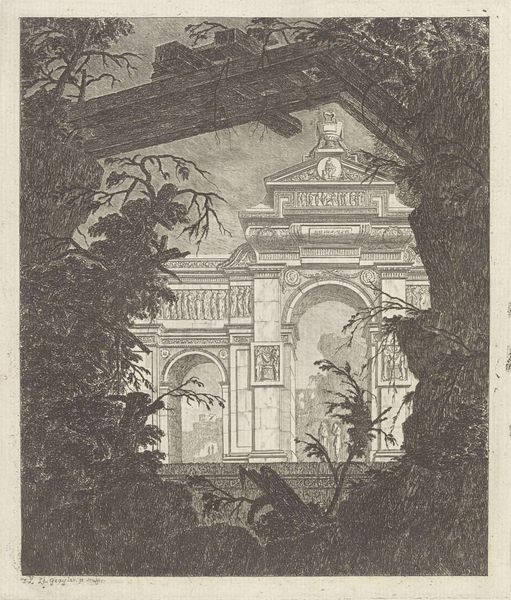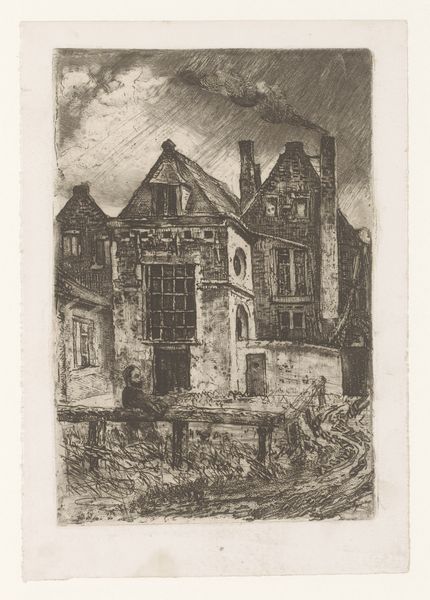
drawing, print, etching
#
drawing
# print
#
etching
#
landscape
#
cityscape
Dimensions: plate: 305 x 226 mm sheet: 350 x 306 mm
Copyright: National Gallery of Art: CC0 1.0
Curator: This etching by Blanche McVeigh, titled "Courthouse, Decatur, Texas," was created circa 1943-1944. What’s your first impression? Editor: Stark and imposing. The courthouse looms—the composition definitely emphasizes its verticality and strength. It almost feels like it's brooding under that dense, clouded sky. Curator: The composition certainly funnels our gaze upward, and the stark contrasts in the etching contribute to that mood. Look at how the dark sky accentuates the architectural details. Consider the way McVeigh uses line to delineate the structure's different textures – stone, wood, glass. There is a careful orchestration of dark and light. Editor: It’s more than just orchestration; I’m thinking about the role of the courthouse itself. Courthouses represent civic power, order, and the law. Putting this austere building against that sky gives it a symbolic weight. What would it have meant to showcase the center of town at the time this was done, in the middle of World War II? Curator: Indeed, the social and political dimensions add layers of interpretation. The formal choices enhance, rather than detract from, the impact, particularly McVeigh's calculated approach to value contrast. What does the placement of the figures mean here? Editor: Right! The figures are vital—the scale! There are people congregating near the entrance, but their diminutive size makes the courthouse seem even more formidable, doesn't it? It almost dwarfs their presence. Curator: Absolutely, and that careful attention to proportion shows McVeigh's awareness of formal relationships, of how scale can inform the message. How might this piece challenge or support established perspectives? Editor: I would contend it's a reminder of stability during turbulent times, yet there’s an element of unease in how dominant the structure appears; a physical and institutional reminder of social order, and potentially, of control. Curator: Interesting—so we are each picking up different signals in the piece. My focus remains primarily on how McVeigh employs elements like texture and contrast to achieve a specific artistic outcome, as one piece among her prints of American locales. Editor: Regardless, reflecting on this piece gives insight into our understanding of public art and its dialogue with those it represents during specific historical contexts. Thanks! Curator: My pleasure. I was glad to discuss how formalism sheds a different light on how artistic choices are deliberately assembled to invite reaction from its audiences.
Comments
No comments
Be the first to comment and join the conversation on the ultimate creative platform.
